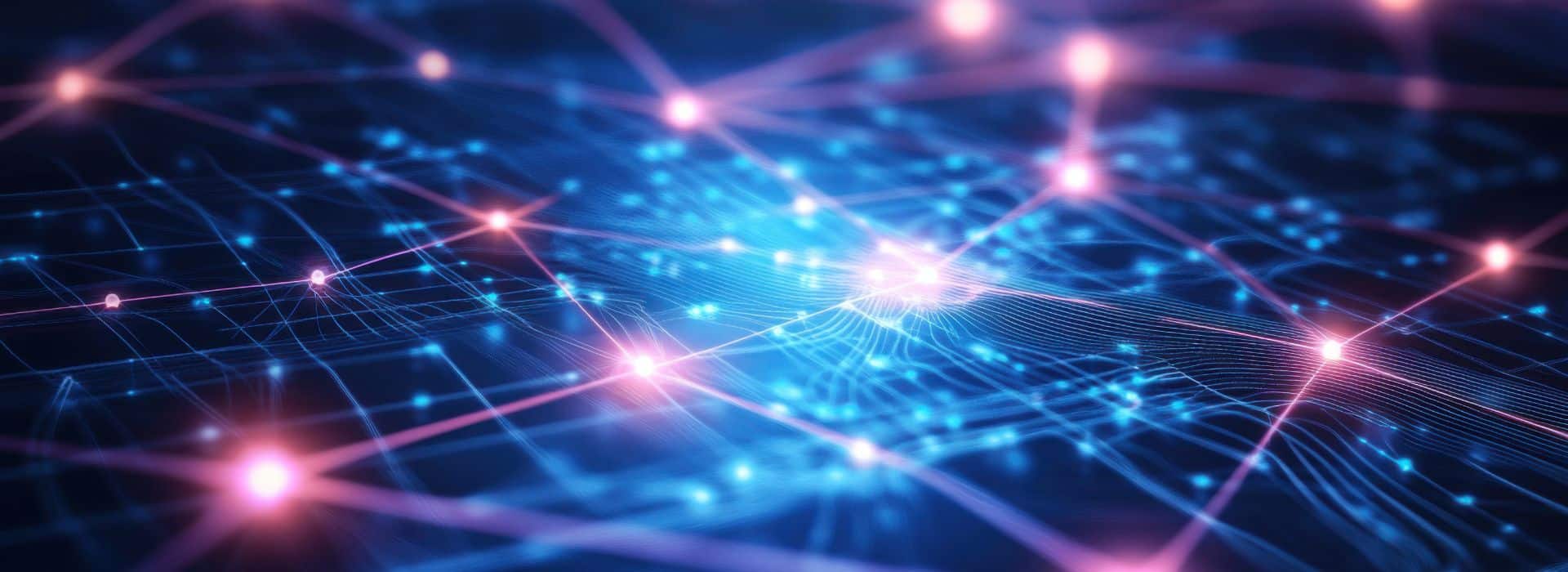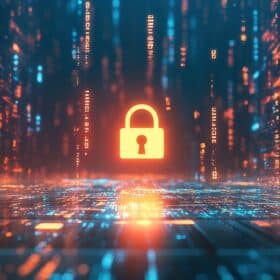Drivers of Networking & Cybersecurity Evolution in 2025
Hot Topics, Key Takeaways and Useful Resources for Solution Vendors
As we reach the halfway point of 2025, we thought it would be a good time to step back and see which trends have become our hot topics for the year.
From where we stand, there are two major technology evolutions currently shaping the future of networking and cybersecurity. The first won’t surprise you, but the second may. As the industry’s hottest topic, AI captures the lion’s share of attention and seems to be rewriting the rules of cybersecurity in real time. It’s a strong project driver among our customers and prospects who are looking for ways to exploit its potential in threat detection and network protection. And a recurring theme in their enquiries is how to use network traffic data to raise the performance of AI-powered solutions.
Generating less noise but requiring attention none-the-less, quantum computing is a storm on the horizon that is rapidly growing in strength and urgency. Pretty much still in an R&D phase, many organizations feel time is on their side and are currently showing little concern for the impact that quantum computing will have on their networks. The reality, however, is that the right time to begin preparing for a quantum world was yesterday. Like AI, quantum computing will bring both benefits and risks to cybersecurity. The risk is that in the very near future, quantum computers will be able to break the cryptographic algorithms that are protecting key infrastructure, gaining access to critical assets. Mitigating this risk is a long and complex matter. This means that organizations should be preparing for it now. One of the technologies that can help speed the process is deep packet inspection (DPI) software. But more of that later. Let’s start by taking a look at AI.
Artificial Intelligence – The Key to Success is Data Quality
AI has the potential to deliver powerful defensive capabilities for networks that are facing increasingly sophisticated AI-generated attacks, but the level of performance is highly dependent on the quality of network traffic data the AI receives. So, one of the fundamental questions is how to collect and deliver accurate, detailed data across hybrid environments that stretch from the cloud to the edge? What hurdles must be overcome in collecting and preparing the data? What do solution vendors need to consider in terms of the architecture and technology components that will facilitate both historical and real-time data gathering, cleansing, and analysis?
In a series of 3 blog posts written for Enea, analyst Roy Chua, Founder and Principal at AvidThink, looks at the influence of AI on offense and defense, considers the current threat landscape, explores strategies for building effective network protection and analyzes the role of data quality on AI results. Read the blog posts here.
Earlier this year, he also chaired a panel discussion on “AI & the Network Edge: Challenges, Solutions & Best Practices for Network Security” with guest speakers Jaye Tillson, Field CTO at HPE Aruba Networking and Laura Wilber, Sr Analyst at Enea. Sharing notes from the field, they address the challenges faced by frontline security teams, look at how network vendors can address them and deliver best practices for managing and improving network security. You can watch the recording of the discussion here.
For examples of how solution vendors are collecting and using detailed traffic data for threat detection, network protection and traffic management, two of Enea’s customers present their deployments in the following video interviews:
- Custocy Presents Their Pioneering AI NDR & How Enea’s Next Gen DPI Boosts Their Solution Performance
- Why Extreme Networks Chose Enea’s Application Recognition Engine for ExtremeCloud SD-WAN
AI and Zero Trust – Knowing Where to Begin
For many network operators and solution vendors who are looking at building security systems, it’s a question of knowing where to begin and how to deploy. A good starting point is a zero trust network architecture (ZTNA). And this brings us back to AI.
Zero-trust architectures are designed to meet the agility, scalability and security needs of today’s dynamic, distributed digital ecosystems. To boost performance, many ZTNA solutions are already using machine learning (ML) and artificial intelligence (AI) very effectively. However, as discussed above, AI-enhanced tools and processes must be built on a foundation of accurate and reliable network traffic intelligence if they are to deliver on their promises.
For more a more in-depth analysis of how AI is being used in ZTNA, see the blog post “Four Pragmatic Ways AI is Already Improving Zero Trust Network Access”
To discover how network visibility can raise performance in solutions using ZTNA, read the white paper “How to Improve ZTNA with Next Generation Deep Packet Inspection”
Post Quantum Cryptography – The Importance of Discovery and Observability
The threat posed by the arrival of very powerful quantum computers is that they will be able to break, or seriously weaken, the cryptographic algorithms that are protecting critical infrastructure and key assets, exposing the encrypted data to the risk of exfiltration or tampering. Migrating to quantum-safe or ‘post-quantum’ cryptography (PQC) is a necessary but complex and lengthy process. The first and often most challenging task in migration to PQC is the discovery phase. Its objective is to build a complete inventory of all cryptographic elements in a network. However, since these cryptographic elements are so widely and deeply dispersed, the only way to locate them is to acquire 100% visibility (or as close as possible) across the entire depth and breadth of the network. It’s a daunting task, made more difficult because many tools only deliver information on specific areas and only for the devices they manage.
Enea’s DPI technology can extract device-related metadata from network traffic to give insights into both unmanaged and managed devices across the whole network, including hybrid networks. The metadata provides detailed contextual information, including how the devices are interacting with other network elements within a broad range of cryptographically-relevant contexts and the detection of behavioral anomalies, enabling the creation of a complete PQC inventory. In addition, Enea’s threat detection software can be integrated with the DPI functions to provide ‘crypto-agility’ through ongoing monitoring and remediation as standards and networks evolve following the migration. To learn more, read our 2-part blog post series “Get Ready for Post-Quantum Cryptography with Enea Qosmos Technology”.
To expand the discovery and observability capabilities of networking and cybersecurity solutions, Enea recently announced a partnership with Akamai whose Fingerbank solution provides one of the most accurate device identification technologies on the market. The combination of Enea’s Qosmos ixEngine and Akamai’s Fingerbank device identification enable solutions to raise the performance of discovery and attack surface mapping, and to establish comprehensive, persistent global monitoring.
Find out more in the blog post “How to Extend Network Discovery and Observability Capabilities”
Network Visibility and In-Depth Traffic Intelligence – The Foundation on Which to Build Long-Term Success
When it comes to security, the starting point is always going to be understanding both what’s on the network and what it’s doing. So, network visibility and traffic intelligence aren’t important, they’re vital. It’s not just about detecting malicious traffic, it’s knowing what applications are flowing over the network and their behavior. It’s knowing if the traffic flows are going where they should and if they’re doing what they’re supposed to do. It’s about precision in identifying the traffic and the depth of information that can be extracted from it.
Successful network security solutions are those with a strong foundation in network visibility and traffic intelligence. The quality data provided by Enea is rich in detail, extensive in reach and precise in identification, enabling AI tools and network discovery solutions, among others, to produce better and more reliable results.
To find out more about how Enea’s software can help you build solutions for success today and tomorrow, request a meeting with one of our experts.





